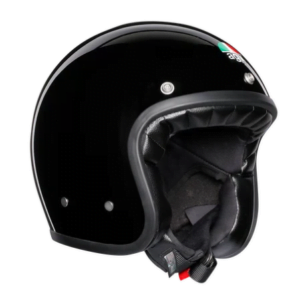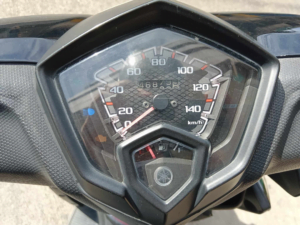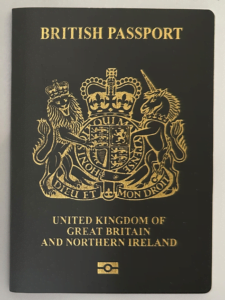Renting a scooter and navigating the busy streets of Thailand is almost seen as a right of passage for many with millions of tourists flocking to the country every year.
Despite what Tick Tock and Instagram may have you believe, there is more to getting on two wheels in many parts of the world including Thailand.
Here are the top things you should consider when renting a scooter or motorbike in Thailand:
1. Investigate Your Licencing Requirments & Get An International Licence
For visitors planning to hire a motorcycle in Thailand, you will require an IDP (International Drivers Permit) with the correct motorcycle endorsement to legally ride on Thai rides.

There is debate about the absolute necessity of the IDP permit if your licence is printed in English and you are a tourist as part of the 1968 Vienna Convention however it is the expectation of most police and stated requirement of most official sources including Royal Thai Embassy, London that you carry an IDP.
IDP Permits can be applied for in your home country if you already hold a licence for a small fee, for example in the United Kingdom these can be applied for at the Post Office or in Australia the Australian Automotive Association and take around 2 weeks to process.
Many scooter rental agencies will rent to you without a licence however it will be at your own risk and may invalidate any insurance.
The fine for not having a valid licence in Thailand is between 500-1000 baht (~USD$30) at the officer’s discretion. It is very common for Thai police to single out foreigners for these checks!
We recommend keeping a plastic pocket under the seat containing: Photo Copy of your passport & latest passport stamp, rental contract, local driver’s licence (if you don’t carry it in your wallet) and the paper International Drivers Permit booklet.
2. Consider Your Experience Level Before You Leave
Thailand’s roads are no joke and ranked between the 1st-2nd most deadly in the world with over 24,000 dying on the roads every year and many times getting into accidents receiving varying levels of injury.
Western ‘Road Rules’ as you know them are not obeyed, an expectation from other road users that you will be sharing the road in very close proximity to one another requiring excellent riding skill and rapidly changing traffic conditions which require complete confidence in your riding abilities.
It is recommended that you first experience the traffic conditions first hand, and even get on the back of a Grab Scooter (taxi) for 20 minutes to get a feel of the traffic system.
If you have never ridden a motorcycle before or only have limited experience Thai Roads are not the place to learn on!
3. Check Travel Insurance Coverage
Be sure to read the in’s and outs of your insurance policy when it comes to riding bikes overseas.
Many policies will insist that you are correctly licenced to a certain level (ie Full Open Licence) and require you to wear protective gear such as a helmet.
4. Always Wear A Helmet & Suitable Protective Gear
Wearing the correct protective gear is often an afterthought on Thai roads, often due to the heat and low speeds which fool many into a false sense of security.
Regardless of speed, every crash bloody hurts! Talking from experience.

In Thailand a helmet is mandatory and strongly recommended you wear. Where possible bring your own helmet from overseas as rental companies often only have a limited selection with no guarantee it will fit you or be in good condition. Local helmet quality ranges from ornamental only which offers no protection to what would be considered entry helmets in the West.
Full face helmet vs half face, obviously the former is better however half face does offer substantially more visibility and better odds you will actually wear. The best helmet is the one you wear.
Lightweight summer riding gloves are another important aspect. Road rush on your hands is no laughing matter but more practically the sun is strong here and will burn the tops of your hands very quickly!
When riding it’s a good idea to always wear long cotton pants and something similar to cover the arms to help reduce exposure to the elements and offer some minor protection from abrasion in a low speed tumble.
5. Research Motorcycle Rental Companies Carefully

Not every rental firm is rental companies that unfortunately who will want to take you for a ride of your own. Before hiring from a company we advise:
- Ask for recommendations from local hotels and Facebook groups.
- Research more than one company and compare their offerings
- Read their reviews: Both positive & negative to see how they handle problems or any common concerns.
6. Choose The Correct Bike
It is easy to be overwhelmed by the choice of 2 wheeled contraptions for rental in Thailand, ranging from electric bikes to large touring motorcycles.
- Consider the type of riding you will be doing: Inner City, Long Distance Highway Riding, Rural roads
- Consider your experience level: Automatic CVT, Semi Automatic Step Through, Manual, Weight of bike
- Will you be carrying passengers or require additional storage
Budget Scooters: Honda Click 125i & Yamaha GT125
Common to most rental fleets and a true workhorse scooter are the Honda Click and Yamaha GT. Both are excellent value & cheap to run, easy to ride, ultra-reliable and perfect for most city riding or short trips.
Both bikes have minor differences and options, the edge goes to the Honda for having a slightly more powerful water-cooled engine however it is slightly heavier and arguably slightly less maneuverable.
Typically these rent out for ~250THB a day or ~3000THB for a month. For a few dollars more it is often worth upgrading to the later models that feature LED lights which are slightly more visible to other road users and a little better at illuminating the road ahead on unlit streets

Premium Scooters: Honda PCX & Yamaha Nmax
If you are planning to go on a longer adventure or riding with a pillion (passenger) it is strongly recommended that you look beyond a budget value and consider their larger 150cc+ brothers. Most can be rented out for around ~500THB a day.
They have better quality suspension and comfortable seats allowing for a less back-breaking ride, a little more road presence, brighter LED headlights, more storage, better weather protection and on newer models ABS brakes. The downsides are they are slightly more pricey, may have slightly less availability and are a little harder to throw around in peak hour traffic.

Motorcycles & Long Distance Riding: Kawasaki X300 Versys, Honda CB500X, Yamaha XMAX 300

For longer highway riding, extended 2-Up riding, touring and rural roads it’s hard to turn down a recommendation for a true motorbike.
Highspeed Thai roads require a high-capacity motorbike to safely travel on and the power to get out of sketchy situations. The going rate is ~10,000THB a day and advance bookings are essential as many providers only have a limited number of larger bikes in their fleet.
It is strongly recommended you be an experienced rider if hiring a motorcycle and be aware they are far from ideal in
7. Inspect And Photograph The Bike Prior To Acceptance
As with any rental, it’s essential you independently document the condition of the vehicle before leaving the store. Most providers are honest and fair with minor damage if it is reported correctly. Where possible try to take

It’s vital to take pictures of and document:
- Odometer & Fuel Reading
- Pictures of all sides
- Close up photos of any damage (handle bar ends, levers, mirrors scratches or cracks to plastic, leaking oil,)
- Photos of any helmets or equipment you are hiring
- Tyre conditions which should have sufficient tread
- Any leaks around the engine/gearbox
Before setting off be sure to test the lights (low/full beam, tail/brake light), indicators and horn. If the bike is not in good condition refuse and ask for a replacement.
8. Review The Rental Contract
Every store will have a different contract and it is essential you know what you are getting into and what your liabilities are.
What am I covered for and is this bike insured?
Most rental companies will have basic medical coverage which will cover both yourself and affected parties if you are involved in an accident. Know what this coverage amount is and what it covers.
‘Damage to property or the bike’ is not normally covered by the standard rental policy. If you damage the bike or crash into someone else you may be liable for potentially thousands of dollars! It is a good idea to check if your travel insurance covers this or if you can purchase an additional third-party policy.
Most providers will specify the value of the bike if it is destroyed or stolen.
What are the exclusions and restrictions of the policy
Every provider will have conditions, restrictions and expectations of their vehicles.
Be mindful of any restrictions limiting you to a particular area (within 50km of the city) or prohibited areas such as mountains or certain roads.
9. Always Hold Onto Your Passport

When overseas your passport if your lifeline. If a rental provider requires them to hold onto your passport just refuse and walk away, no exceptions. Most reputable providers will give you the option of handing over a small cash deposit of ~1000THB in lieu of holding onto the passport.
If an incident occurs such as damage to the bike or an emergency where you need to leave the country at a moment’s notice you do not want to be held hostage.
10. Brush Up On Thai Traffic Laws
Thai Traffic law is a mess and ranges from being a mere suggestion to an undocumented norm that someone yells at you to follow if you don’t follow it.
In a nutshell:
- Traffic direction is Keep Left, however traffic of all types can come at all angles, speeds and from places they shouldn’t
- Inner city areas are normally speed-limited to 40-50km and signposted
- Helmets are mandatory, but enforcement is typically only targeted at foreigners (Farang)
- The bigger vehicle has or certainly thinks they have the right of way (trucks> cars > motorcycles> pedestrians)
- Keep left or die, lanes are for cars not bikes, particularly the rightmost lanes unless you are immediately turning right.
- Turning Left at redlight is legal at some intersections, but ok at all if police are not watching!
- Follow the guy infront: If riders are in a certain lane or doing something a certain way, copy them!
Check out are article Thai Motorcycle Road Rules & Tips which has a crash course on essential things you need to know before hitting the roads
We’d love to hear about your Thai Rental experiences, let us know in the comments below!